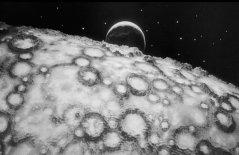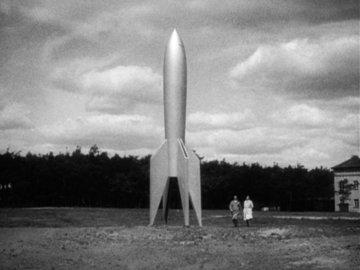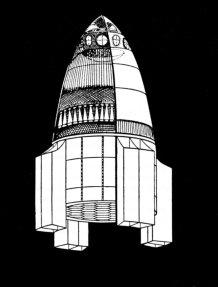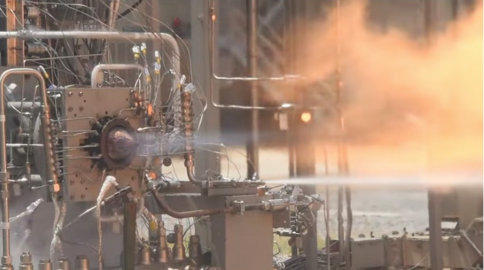The Aerospace History Blog - Page 12

Post 054
Russias Luftwaffe aircraft in 1945
Not only the Western Allies were in search of modern Luftwaffe
aircraft in 1945, but also the Soviet Union collected, examined and
tested Germany's last aircraft.
All nations benefited especially from German developments in the
jet engine. Photos of German jets in Russian hands are rare and
often of poor quality.

Posted by Uwe W. Jack

The Focke Wulf Fw 190 D-9 “Longnose”, often called the best
Luftwaffe piston engine fighter. In April 1945 Longnose aircraft with
a Red Star were met in aerial combat by Luftwaffe pilots.
(click to enlarge - the file may not be modified - commercial use is
prohibited.)
The Messerschmitt Me 262 was the most wanted war booty.
This aircraft carries the two white bars under the weapon bay. This indicates
that four canons MK 108 are fitted, then the front tank was not allowed to be
filled to capacity.
(click to enlarge - the file may not be modified - commercial use is prohibited.)
Three proud soviet officers and (most probably) a
German technican in front of a Me 262.
(click to enlarge - the file may not be modified -
commercial use is prohibited.)
Post 055
The world’s first airfield
The first site designed for flying with "heavier-than-air" machines
was not in Kitty Hawk in North Carolina, not in the USA and not in
France, England or Russia: the world's first airfield is located in
Berlin.
Otto Lilienthal first flew in an aeroplane in 1891. So that he didn't
always have to travel so far to the outskirts of the city, he had a hill
with a height of 15 metres piled up in the Berlin-Lichterfelde district,
in 1894. He named this "Fliegeberg" (Flight Hill) or "Flugplatz"
(Place to Fly = airfield), a designation Germany still uses today.
From here he made many successful flights. On 9 August 1896, Otto
Lilienthal died in a flying accident elsewhere.
The hill still exists today and is a monument to the aviation pioneer
and is surrounded by a park.

Posted by Uwe W. Jack

On top of his “Fliegeberg” in Berlin, Otto
Lilienthal prepares for another flight with
his biplane-glider in 1894.
(click to enlarge - the file may not be
modified - commercial use is prohibited.)
This is how Otto Lilienthal’s artificial hill looks in 2022: it is a memorial.
(click to enlarge - the file may not be modified - commercial use is prohibited.)
Left: Standing at the foot of the Lilienthal hill. My little grandson
could not be stopped and climbed the steps up alone.
Above: At the top is a small platform with a globe.







In the main direction of flight, a pool of water marks the distance of 30 to 80 Meters
Lilienthal often flew.
(click to enlarge - the file may not be modified - commercial use is prohibited.)
The globe is a reminder that any point in the world today
can be reached by aircraft, the first of which flew here.




A rocket fighter Messerschmitt Me 163 was also tested by the Red
Army - but only as a glider. The rocket engine seemed too
dangerous.
(click to enlarge - the file may not be modified - commercial use is
prohibited.)
Post 057
1923: The starting point of spaceflight
In 1923, a book was published in Germany that must be regarded as
the starting signal for spaceflight. Born in 1894 in Austrian
Transylvania (now Romania), Hermann Oberth was studying in
Heidelberg at the time. Since his childhood, he has been
enthusiastic about space travel and rockets. He designed rockets
with liquid propellants, even one for a manned flight to the moon. In
1921, he had finished his designs and wanted to take them as the
subject of a dissertation. But the university rejects this. It was neither
physics nor mechanical engineering, and too fantastic.
In 1923 Oberth takes all the money he has saved for his small family
with his wife and a child and uses it to pay for the publication of his
work as a book.

Posted by Uwe W. Jack

Published in 1923, the rocket-book of
Hermann Oberth is still an outstanding
masterpiece of scientific writing.
(click to enlarge - the file may not be
modified - commercial use is
prohibited.)
Left: The design for a two-stage sounding rocket with liquid fuels - from Oberth’s 1923 book.
Right: Hermann Oberth in 1929 in the workshop of the motion company that produced the
science fiction movie “Girl in the Moon” about the first flight to the moon. His task was to
build a sounding rocket that was to set a new altitude record for marketing the movie. He
holds in his hands a device for testing the combustion of liquid oxygen and gasoline.
(click to enlarge - the files may not be modified - commercial use is prohibited.)
Circling the moon, the earth rises over the
horizon. An anticipation of the famous photo
of Apollo 8.
(click to enlarge - the file may not be
modified - commercial use is prohibited.)
From the 1929 movie: Preparing Oberth’s moon rocket for the first
manned moon landing mission. Still from the 1929 movie “Girl in the
moon”.
(click to enlarge - the file may not be modified - commercial use is
prohibited.)
From the 1929 movie: This unmanned rocket brought back the first
photos from the back side of the moon. Compare the dimensions
to the two people on the right with the later V-2 rocket!
(click to enlarge - the file may not be modified - commercial use is
prohibited.)



While researching the subject, Oberth had come across a newspaper
notice about Robert H. Goddard. He writes to him on May 3, 1922:
„Already many years I work at the problem to pass over the
atmosphere of our earth by means of rocket. When I was now
publishing the result of my examinations and calculations, I learned by
the newspaper, that I am not alone in my inquiries and that you, dear
Sir have already done much important work in this sphere. In spite of
my efforts, I did not succeed in getting your book about this object.
Therefore I beg you, dear Sir, to let me have them. At once after
coming out of my work I will be honoured to send it to you, for I think
that only by common work of the scholars of all nations can be solved
this great problem.”
Goddard was at this time developing his rocket, which was based on
the principle of powder cartridges fired like in a machine gun. He
pursued this principle until the end of 1924 and only then turned
completely to the liquid-fueled rocket. Goddard completely rejected
the exchange of knowledge suggested by Oberth. He even claimed
that Oberth's findings could only be intellectual theft of his inventions.




Oberth’s 1923 moon rocket.
(click to enlarge - the file may not be
modified - commercial use is
prohibited.)
In the fall of 1923, Oberth's book "The Rocket to Planetary Spaces"
was published. In it, he lays out the physical and technical
foundations of the liquid rocket. He even sets up a program that,
starting with high-altitude sounding rockets, is to lead to manned
spaceflight. Oberth begins his career as a space pioneer with this
statement.
Goddard, on the other hand, never published a comparable work or
produced any concrete space visions until the end of his life.
Oberth's book led 1929 to the famous science fiction movie "Girl in
the Moon", with Oberth as a consultant. Inspired by this film, a
private rocket experimental station was established in Berlin, from
which student Wernher von Braun was then recruited by the German
Army. The rest of the story is well-known.
100 years ago, a small book ignited the spark that paved the way to
spaceflight.

On a few occasions Uwe W. Jack was able to visit the home of Hermann Oberth.
Here he is standing in the living room with the portrait of the pioneer.
(click to enlarge - the file may not be modified - commercial use is prohibited.)
Post 056
A Revolution in Rocket Engines
There have been few technical innovations in liquid propellant
rocket engines in recent decades. Only manufacturing has been
revolutionized by 3D printing, but the working process has
remained the same since the first rocket engines of the pioneering
years.
NASA announced on Jan. 26, 2023, that it was working on a new
rocket engine. An experimental engine was successfully operated
for ten minutes in 2022. In this process, fuel is not injected
continuously into the combustion chamber and ignited as before.
Through a circular array of nozzles close to the combustion
chamber wall, the fuel flows in - only at the edge of the combustion
chamber with a central cylinder. In the process, each nozzle
receives only a short burst of fuel, then the nozzle next to it, and so
on. Thus, the combustion moves in a circle around the wall.
The combustion is described as pulsating and still provides steady
thrust because there is always one nozzle working at a time. The
process is called a “Rotating Detonation Rocket Engine” (RDRE). It
delivers more thrust per amount of fuel consumed due to higher
combustion chamber pressure and higher combustion temperature.
The process is also being investigated in air-jet engines for aircraft.

Posted by Uwe W. Jack

Testing of the “Rotating Detonation Rocket Engine” at the Marshall Space Flight Center.
Short video on youtube.com.
(click to see the video - the terms of the Marshall Space Flight Center must be obeyed.)



How a “Rotating Detonation Rocket Engine”
works. Animation of the Oak Ridge National
Laboratory on Flickr.
(click to see the video - the terms of the
Oak Ridge National Laboratory must be
obeyed.)











